- I first started off with plugging jumper wires into the ground and 5V input on the RedBoard to the power and ground column on the breadboard. Vittoria taught me a neat trick, twirling wires together in order to keep the board neat and clean.
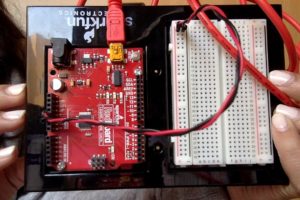
2) I tried to test if the LED pin would light up if I put the two jumper wires against a conductive material (in this case, I made the jumper wires touch one another), and it did successfully.
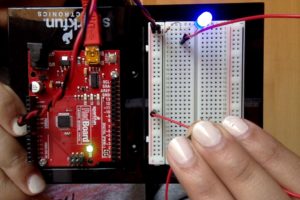
3) I decided to go on with my idea, which was that whenever I opened or closed a book, the light would switch on or off. I decided to tape the jumper wires to small conductive sheets, and then tape them on the pages, as demonstrated below. When the book is closed, the lights would turn on, and when the book is open, the lights would turn off.
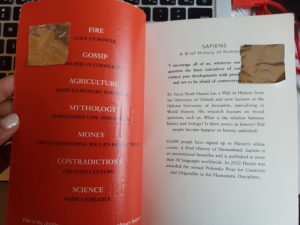
However, I found my idea to be slightly useless. Firstly, the conductive sheets were only on the first two pages. What if the reader opened another page? Nothing would happen with the LED light. Also, a LED indicator of when the book is open or closed essentially has no purpose as my hands can also indicate when the book is open or closed. After talking to Professor Aaron about my idea, he suggested that I create a reading lamp that turns on when the book is open, and turns off when the book is closed.
4) In order to execute this plan, I decided to create two bookmarks covered in conductive material. One is called a bookmark, while the other is called a lamp switch bookmark. The bookmark is placed on whichever page the reader is on, and the lamp switch bookmark is placed on the original bookmark when an individual is reading. When an individual is not reading, the lamp switch bookmark must be set on a different page so the conductive material does not touch and the LED doesn’t light up.
a)  b)
b)
c)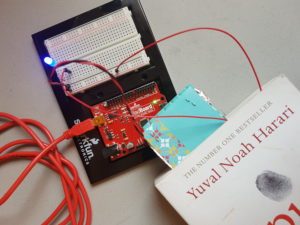
(Bookmark and lamp switch bookmark making contact with one another so the LED lights up)
What was problematic with this plan was that it did not meet the hands-free requirement that was asked for this assignment. I needed another way of making the LED light up when the book was open.
5) Before I explain what I did in order to make the LED light up when the book was open, it would be helpful to take a look at the images:
a)
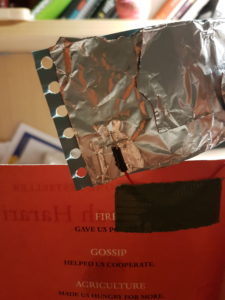
b)
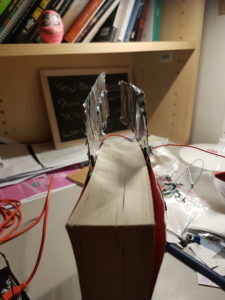
c)
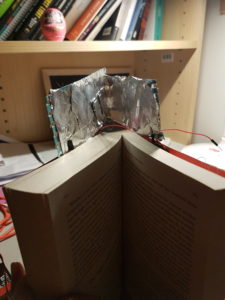
I changed the position of the bookmarks into a landscape position and put them on top of the novel, near the spine of the book. Subsequently, when the book is closed the conductive material does not touch. When the book is open, the conductive material makes contact and the LED lights up. A possible issue with this design may be the storage of the book. The bookmarks add extra length to the novel, therefore it may have trouble sitting on a shelf. Also, the jumper wires were quite short and therefore it was challenging to actually test whether the concept worked or not. Unfortunately the image couldn’t capture the LED light on while the novel was open, but it does work.

Very creative solution, bravo! Also, I just finished Sapiens, loved it. How do you like it?